#1902-1953
Text


Audrey Hepburn at an Automat in Times Square. Photographed 1951 by Lawrence Fried.
Horn & Hardart's Automats were innovative, self-service restaurants that fed millions of New Yorkers but were also a tourist attraction for almost eighty years.
After a visit to Berlin around the turn of the century, Philadelphia restaurant owners Joseph Horn and Frank Hardart incorporated many of the ideas they saw at "waiterless cafeterias", installing automation equipment at their new Philadelphia "Automat" in 1902. It didn't catch on, proving to be a little too ahead of its time. But their second attempt in New York City ten years later did. By then, there were hundreds of thousands of stenographers, secretaries, and sales clerks filling new office buildings throughout Manhattan, and the Automat provided them with an inexpensive place to meet friends, eat fresh, wholesome and well-prepared meals in safe and comfortable surroundings, and where they never had to worry about tipping. Beautifully designed with dolphin heads for coffee spouts, marble floors, high ceilings and pristine menus, in record time one Automat grew to 24, serving 2400 pies a day from a central bakery that famously turned out cheap, high caliber food in abundance. Quality was a hallmark. Rules were “Do not compromise”. During the Depression, when so many restaurants went belly up, the Automats thrived. In World War II, Horn & Hardart supplied the food for combat ships. And by 1953, they were serving 2,206,000 beef pies, 10,652,000 desserts, 3,388,000 hamburgers and 4,886,000 pounds of spaghetti to 8,000,000 customers per day.
546 notes
·
View notes
Text
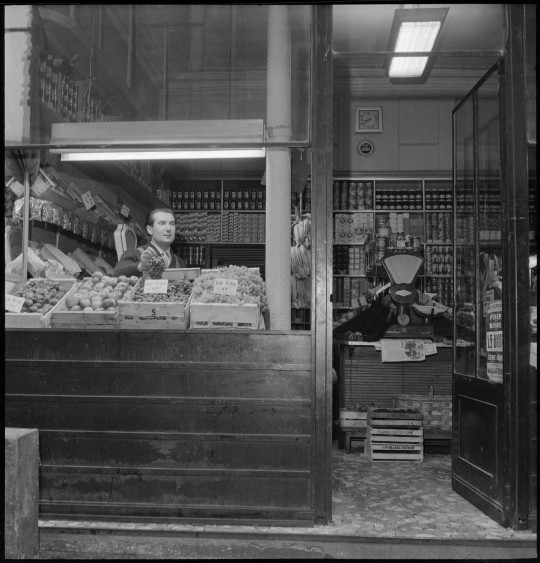
Denise Colomb (1902-2004)
Chez le primeur
Paris 1953-1954
49 notes
·
View notes
Text
Milestone Monday
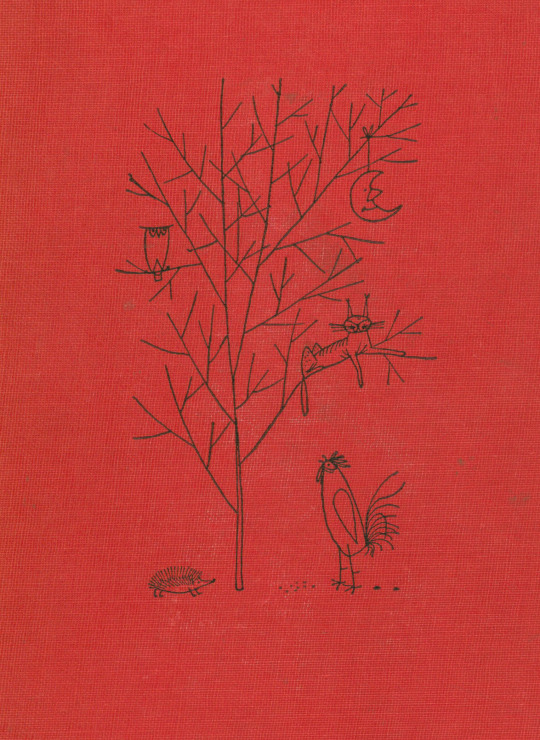

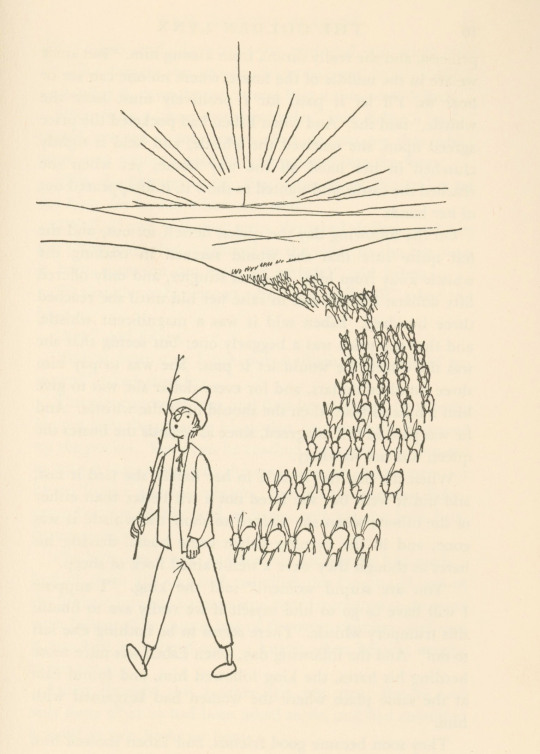
The King's Hares, from Norway

The Princess with the Twelve Pair of Golden Shoes, from Denmark

Queen Crane, from Sweden

The Rooster, the Hand Mill and the Swarm of Hornets, from Sweden

Ti-Tirit-Ti, from Italy

The Adventures of Bona and Nello, from Italy

The Hedgehog Who Became a Prince, from Poland
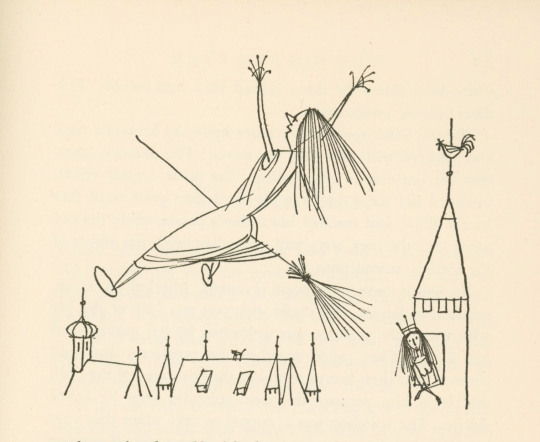
The Flight, from Poland
April 1st is the birthday of American librarian and storyteller Augusta Braxton Baker (1911-1998). Born to two schoolteachers in Baltimore, Baker was a voracious student who read at a young age and careened through elementary and high school. With advocacy support from Eleanor Roosevelt, Baker was admitted to the Albany Teacher’s College and in 1934 earned a B. A. in Education and a B. S. in Library Science making her the first African American to earn a librarianship degree from the college.
In 1939, Baker went on to work as the children’s librarian at New York Public Library’s Harlem branch, founding the James Weldon Johnson Memorial Collection of Children’s Books to showcase representation of Black children and life in books, and beginning a lifelong career with children’s literature and the New York Public Library (NYPL). In 1953, she was appointed Storytelling Specialist and Assistant Coordinator of Children’s Services, quickly moving into the Coordinator of Children’s Services position years later and becoming the first African American to hold an administrative position with NYPL. Throughout her career, Baker was active with the American Library Association, and chaired committees for the Newbery Medal and Caldecott Medal recognizing excellence in children’s literature.
In celebration of Baker’s birthday, we’re sharing The Golden Lynx and Other Tales, a collection of international folk tales compiled by Baker and illustrated by Austrian artist Johannes Troyer (1902-1969). This is the first edition of the book published in 1960 by J. B. Lippincott and is signed by Baker, who writes in the introduction, “No story has been included in this collection that has not stood the supreme test of the children’s interest and approval”.
Read other Milestone Monday posts here!
View more posts on children's books here.
– Jenna, Special Collections Graduate Intern
#Augusta Braxton Baker#Milestone Monday#The Golden Lynx and Other Tales#Johannes Troyer#J.B. Lippincott#New York Public Library#American Library Association#Newberry Medal#Caldecott Medal#Historical Curriculum Collection#birthdays
51 notes
·
View notes
Text
Which version of this do you prefer?








This poll is a part one poll; there will be a second part with some further adaptations posted at some point in the future
*Please see under the read more for a note about the "original" work
Normally I put notes in the tags, but this is a large enough one that I wanted to put it on the post itself: the "original" work here is a little complicated, because Barrie wrote a couple different versions and they're very interconnected in ways that makes selecting an original a bit tricky. To the best of my knowledge: Peter Pan as a character first shows up in Barrie's book The Little White Bird, from 1902, in chapters called "Peter Pan in Kensington Gardens" (the book is not exclusively about him, however). Then in 1904, Barrie writes the play "Peter Pan, or the Boy Who Wouldn't Grow Up", which *does* center the character. *Then* in 1906, the chapters from The Little White Bird are expanded into their own book, Peter Pan in Kensington Gardens. And then finally in 1911, the play's storyline is also used for the book Peter and Wendy. Because of this interconnectivity between versions (as opposed to them just being clear sequels/spinoffs/etc) and the fact that different adaptations don't all unanimously use one of these as their main source point (and some use multiple), the original listed here is encompassing all of them by just being "original literary works".
#as it says in the poll there will be a part 2#theres quite a lot of versions of peter pan#and I do have a number bookmarked for part 2 that I left off here just to keep it from being too overcrowded#peter pan#jm barrie#peter pan 1953#disney's peter pan#disney#disney movies#peter pan 1924#peter pan 1954#peter pan the musical#hook 1991#peter pan 2003#pan 2015#peter pan and wendy#peter pan & wendy#peter pan and wendy 2023#books#plays#literature#animation#animated films#films#musicals#musical theater#theater#fantasy#herbert brenon#steven spielberg
27 notes
·
View notes
Text
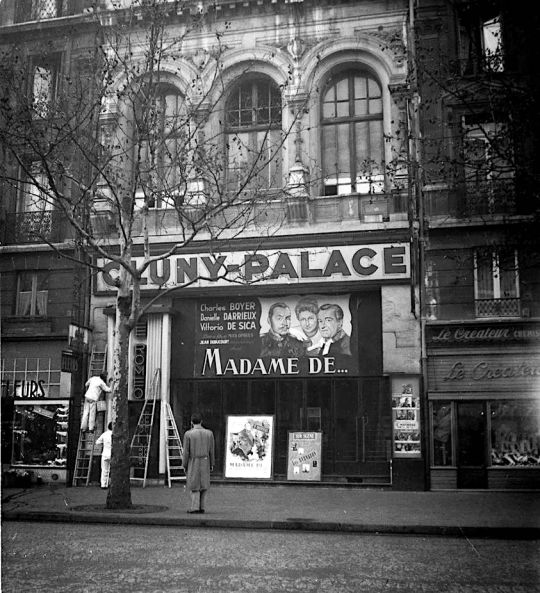
Max Ophuls, May 6, 1902 – March 26, 1957.
Cinéma Cluny-Palace. 1953 photo by Jean Fargeas.
24 notes
·
View notes
Text

Coronation Necklace, Garrard, 1858-1911


Queen Victoria (1887)
Queen Alexandra (1902); without its pendant
Queen Mary (1911) /
Queen Elizabeth The Queen Mother (1937); without its pendant
Queen Elizabeth II (1953)
Queen Camilla (2023)
147 notes
·
View notes
Photo





Coronation Photos 1902, 1911, 1937, 1953, 2023.
197 notes
·
View notes
Text

Edith Rimmington (1902-1986) The Museum [watercolour, gouache, pen and ink on paper, 1953]
58 notes
·
View notes
Text
Chinese Ethnic Minority Literature
I just finished taking an incredibly eye-opening class about Chinese ethnic minority literature. China has a thriving minority literature scene, and it's absolutely fascinating and full of interesting works, so I wanted to share some of the authors that I learned about this semester! This is, obviously, an incomplete list-- it's pretty heavily biased towards what we read about in class, and there's probably a lot I've missed!
For any authors with full works that have been translated into English, I've listed it under their names. Some other authors may also have poems or short stories published in translation online or in anthologies.
Hani 哈尼
Mo Du 莫獨 (b. 1963) - poems
Hui 回族
Huo Da 霍達 (b. 1945) - novels
The Jade King: History of a Chinese Muslim Family (1992)
Zhang Chengzhi 張承志 (b. 1948) -novels, short stories
The Black Steed (1990)
Korean 朝鮮族
Jin Renshun 金仁順 (b. 1970) - novels, short stories
Jin Wenxue 金文學 (b. 1962) - novels
Manchu 滿族
Duanmu Hongliang 端木蕻良 (1912-1996)
Lao She 老舍 (1899-1966) - novels, short stories, plays
Rickshaw Boy (1945, 2010)
Miao (Hmong) 苗族
He Xiaozhu 何小竹 (b. 1963) - poems, novels
Shen Congwen* 沈從文 (1902-1988) - novels, short stories
Imperfect Paradise (1995)
Border Town (2009)
Mongolian 蒙古族
Altai 阿爾泰 (b. 1949) - poems
Bao Liying 包麗英 (b. 1968) - novels
Baoyinhexige 寶音賀希格 - poems
Chen Ganglong 陳崗龍 (b. 1970) - poems
Guo Xuebo 郭雪波 (b. 1948) - novels, short stories
The Desert Wolf (1996)
Malaqinfu 瑪拉沁夫 (b. 1930)- novels
Naxi 納西族
Sha Li 沙蠡 (1953-2008) - novels
Yang Zhengwen 楊正文 (b. 1943) - novels
Qiang 羌族
Qiang Renliu 羌人六 (b. 1987) - poems
Yangzi/Yang Guoqing 羊子/楊國慶 - poems
Tibetan 藏族
Alai 阿來 (b. 1959) - novels, short stories
Red Poppies (2003)
The Song of King Gesar (2013)
Tashi Dawa 扎西達娃 (b. 1959) - novels, short stories
A Soul in Bondage: Stories from Tibet (1992)
Yangdron 央珍 (b. 1963) - novels
Uyghur 維吾爾族
Alat Asem 阿拉提·阿斯木 (b. 1958) - novels, short stories
Confessions of a Jade Lord (2019)
Wa/Va 佤族
Burao Yilu 布饒依露 - poems
Yi 彝族
Aku Wuwu 阿庫烏霧 (b. 1964) - poems, essays
Tiger Traces: Selected Nuosu and Chinese Poetry of Aku Wuwu (2006)
Coyote Traces: Aku Wuwu's Poetic Sojourn in America (2015)
Bamo Qubumo 巴莫曲佈嫫 (b. 1964) - poems, academic articles
Eni Mushasijia 俄尼·牧莎斯加 (b. 1970) - poems
Jidi Majia 吉狄馬加 (b. 1961) - poems
I, Snow Leopard (2016)
Words from the Fire: Poems by Jidi Majia (2018)
Jimu Langge 吉木狼格 (b. 1963) - poems
Lu Juan 魯娟 (b. 1982) - poems
Ma Deqing 馬德清 (1952-2013) - poems, novels
Na Zhangyuan 納張元 (b. 1966) - essays
*Shen has both Miao and Tujia ancestry, as well as Han. However, I see him listed most frequently as Miao.
More Resources on Ethnic Minority Literature:
Altaic Storytelling: The blog of translator Bruce Humes (translator of Confessions of a Jade Lord, among other works). Has a fairly broad focus, but he's written a lot about ethnic minorities.
Chinese Academy of Social Sciences Institute of Ethnic Literature: China has a thriving infrastructure to support the writing of and research into ethnic minority literature, and this is one of the larger institutions. I believe their research focuses more on oral traditions, but they have some information about contemporary writers as well.
Chinese Women Writers on the Environment: An anthology of eco-fiction by female ethnic minority writers.
Golden Horse Award 駿馬獎: This is an annual award for ethnic minority literature. The wikipedia link lists all the previous winners.
The Leeds Center for New Chinese Writing: Again not specific to ethnic minorities, but features several ethnic minority authors.
Paper Republic: This organization is devoted to translated Chinese writing and isn't specific to ethnic minority literature but has information about and translations of some of the writers on this list.
Poetry International: This website isn't specific to ethnic minorities or even to China, but many of the poets on this list have pages there with a few poems translated into English.
#chinese#mandarin chinese#langblr#studyblr#books#my posts#literature#ooh boy this is a long one!#i'll reblog a version with my own commentary in a few
370 notes
·
View notes
Text
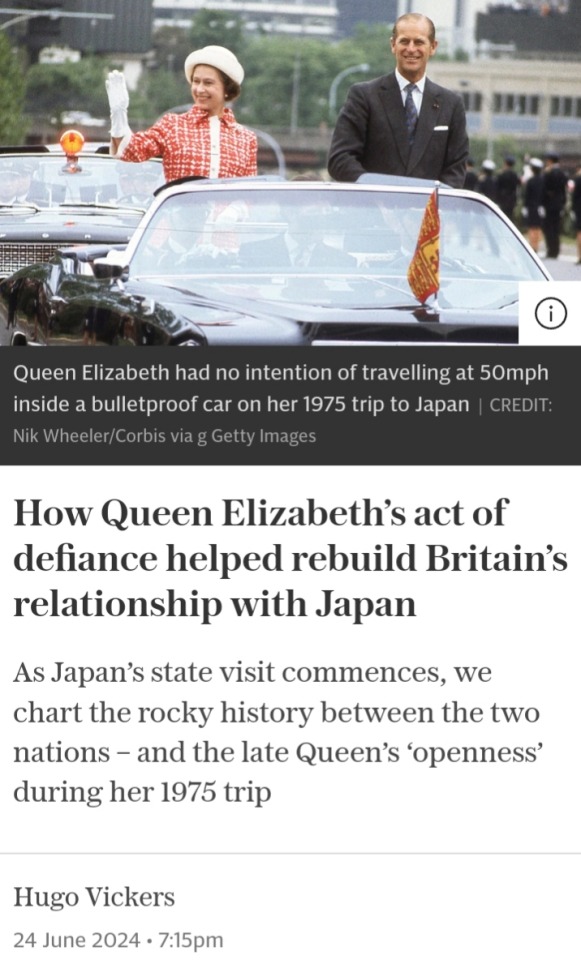
General elections are hardly famous for diplomatic exchanges.
But Rishi Sunak and Keir Starmer are sure to learn some lessons in pragmatism when Emperor Naruhito officially begins his state visit on 25 June.
What will they talk about if they attend the formal banquet at Buckingham Palace, as they are both expected to do, and at which they will perhaps be just a few seats apart?
Naruhito’s unexpected love of the Thames Barrier – he studied the history of cargo-carrying on the river during his spell at Oxford University – will surely appeal.
But the manner in which the British and Japanese royal families have rebuilt bridges after the deep scars of the Second World War might be a more illuminating place to start.
Those scars – the result of Japan’s crimes across the Asia-Pacific and the cruel treatment of British prisoners of war – had left a legacy of resentment that lasted long after the hostilities officially ceased in 1945.
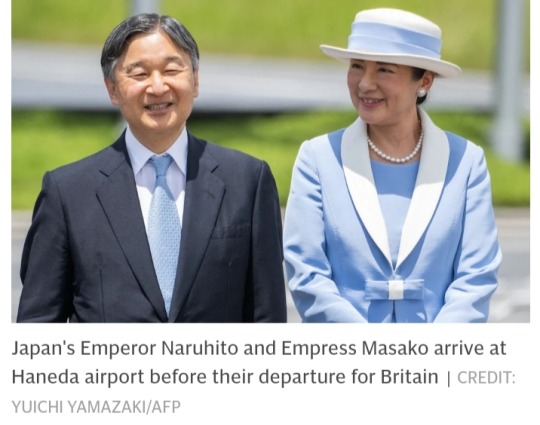
The pressure was on the young Queen Elizabeth II to restore good relations.
Though she rose to the occasion, making huge progress during her reign, the reconciliation was gradual to say the least.
In fact, when official diplomatic relations were restored in 1952, proceedings nearly fell at the first hurdle – over the Emperor’s Garter star.
When the new British Ambassador, Sir Esler Dening, presented his credentials to Emperor Hirohito, the Emperor’s household asked the British Foreign Office if he should wear what they called his “Garter rosette” when he received the ambassador.
The BFO said they preferred that this question had not been asked in the first place, given that Hirohito had of course picked the wrong side to align with during the war.
The exchange also highlighted what a delicate issue Garter honours had become.

To rewind: It’s a tradition for Japanese Emperors to be made British Knights of the Garter.
By 1952, three had had the honour:
Emperor Mutsuhito, who was appointed in 1906 in recognition of the Anglo-Japanese Alliance of 1902; Emperor Yoshihito in 1912, and his son, Emperor Hirohito in 1928.
Emperor Mutsuhito, who was lucky to be appointed in the first place, had never actually left Japan, and Edward VII did not want him to have it because Mutsuhito was a non-Christian monarch.
But Edward changed his mind after Japan’s 1905 victory over Russia and sent Prince Arthur of Connaught to Tokyo on a Garter mission to present the Emperor with the insignia.
Back then this journey was no trifle:
It took Arthur a month to sail from Marseilles to Yokohama to ask Mutsuhito to accept “the highest mark of friendship and esteem which it is in His Majesty’s power to bestow."
The Emperor was so delighted by the honour that he broke tradition and personally received him at the Imperial Palace.
Yoshihito made it out as far as Korea, but his disabilities and sickly disposition prevented him from much else.
His son Hirohito, meanwhile, was much more used to overseas visits.
He’d already visited Britain as part of a European tour in 1921, when he was a rather shy Crown Prince (the Duke of Windsor, as the Prince of Wales, visited Japan the following year).
After Hirohito succeeded as Emperor in 1926 he was appointed to the Garter, which was the cue for another long trip from England to Japan (this time by Prince Henry, Duke of Gloucester) to invest him.
But during the Second World War, Hirohito was regarded as an enemy alien, and his Garter banner was removed from St George’s Chapel and “placed in the vaults.”
Did he know of his demotion? Surely Dening would have maintained a dignified silence when he was pitching his ambassadorial services in 1952.
But the missing banner did cause minor concern ahead of Crown Prince Akihito’s visit to represent his father at the 1953 Coronation.
Luckily, when he laid a wreath in St George’s Chapel in honour of Queen Mary, who had lately died, he did not notice the absence of the Imperial banner.
Instead, his mind was on more youthful pursuits: during his visit, he was keen to go racing and attend Wimbledon.
Ever the astute hostess, the Queen duly invited him to the Derby.
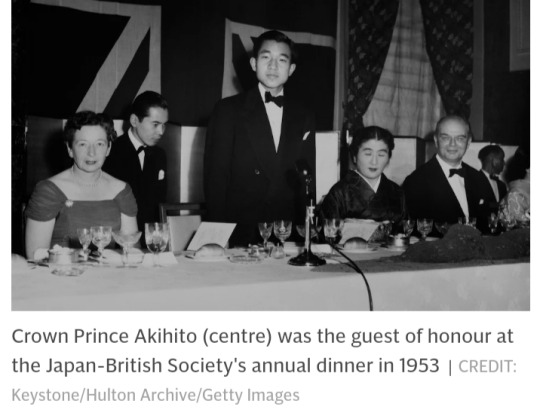
In those early post-war days, the bridge of cordiality that was slowly being built between Japan and Britain was as fragile as kintsugi porcelain.
A more important step towards reconciliation was needed and that came in 1961 when Elizabeth II’s cousin, Princess Alexandra, visited Japan.
She was accompanied by her mother’s private secretary, Sir Philip Hay, who had been a prisoner of war in the Far East, as a result of which he suffered recurring malaria.
Princess Alexandra found the Japanese very friendly but received letters asking why she had gone, since their families had suffered so gravely.
She told me that she gave him a “bottom scraper,” an unfortunately named device used for trawling the sea bed.
He was a marine biologist, having written several books on the subject and collected these objects.
Perhaps this inspired his grandson’s interest.
Whatever the Emperor made of his aquatic gift, he was undoubtedly more pleased by the fact that, during her visit, he was allowed to wear his Garter star.
During these and subsequent years, Princess Chichibu, the Emperor’s sister-in-law, worked tirelessly to improve Anglo-Japanese relations.
Her father had been Japanese Ambassador to Britain and she had been born in Walton on Thames.
With her husband, Prince Chichibu, she had attended the 1937 Coronation.
She became Patron of the Japan-British Society in Tokyo and had a prominent role during Princess Margaret’s visit for British Week in 1969.
At the time, Prince William of Gloucester even served at the British Embassy.
In 1970, King Charles III (as Prince of Wales) visited Japan, and the following year marked the first ever state visit by a Japanese Emperor to Britain when Hirohito landed on our shores once more.
When he accepted Queen Elizabeth II’s invitation, he addressed her as “Madam My Sister” and signed it “Your Majesty’s Good Brother.”
He added in his letter:
“I once visited your country when I was the Crown Prince and have always cherished the pleasant memories of it.”

It was enough to restore his full diplomatic standing: he was quietly reinstated into the Order of the Garter, and a new banner raised over his stall.
The British newspapers were less forgiving:
Private Eye produced a particularly disparaging front cover, and David Walker, at the Foreign Office, wrote that his impression was “that the press became more hostile as the visit wore on.”
The public made their feelings known too: though the Emperor’s arrival at Victoria passed off smoothly, a man was arrested in the Mall for a mild incident, and a protester dug up the tree the Emperor planted at Kew.
Many more favourable column inches were devoted to the visit in the Japanese press, but the British Ambassador conceded: “the misdeeds of the past still remain alive.”
The return state visit by Queen Elizabeth II and Prince Philip in 1975 was a game-changer, however.
As part of it, the Queen wanted to drive through Tokyo in an open convertible Cadillac.
But Sir Fred Warner, the British Ambassador, was aware that there was “a tradition in Japan of political assassination” and that the Japanese police had a “proper fear” for the Queen’s safety.
President Gerald Ford had visited shortly before and had been guarded by an astonishing 160,000 Japanese police.
As Warner put it, “might as well have been wearing a cloak of invisibility.”
The original plan for the Queen was that everywhere she went, she should be driven at 50mph in a car with dark bullet-proof glass.
Unsurprisingly, this held no appeal for her: the Queen got her way and what became known as “the Open Car Drive” passed into Japanese history.
Since it passed off well, the Japanese police emerged as heroes of the plan.

The effect was that the Emperor, who led a somewhat cloistered existence, was impressed by the openness of the British Royal family.
The members of the Imperial family “felt that a window had been thrown open and a gust of fresh air let into their lives.”
On both sides, the overwhelming view was that the Queen’s visit, with its innovative approach to visibility, had “marked a significant step towards reconciliation and renewal of old friendships.”
Prince Philip played his part too, making a virtue of lying by omission.
During the state visit he was frequently asked: “Your first visit to Japan?”
“Yes”, he said.
In truth, he had been in Japan in 1945 at the time of the Japanese surrender.
When Emperor Hirohito died in 1989, Prince Philip volunteered to represent the Queen, feeling he was the right person to do so, since he had served in the war and did not mind any criticism that might come.
A decade later, in 1998, it was Hirohito’s son Akihito’s turn to pay a state visit to Britain.
But this time, the press were more pro-actively hostile: one TV station sent a car down to the house of a former POW to film him looking at his photos from the war.
They also took him by car to the Mall to film him setting fire to a Japanese flag – directing the cameras so that the state procession could be seen passing behind him.
This was despite the fact that Emperor Akihito, unlike his father, had played no part in the Second World War.
Akihito was given the Garter on his visit. Naruhito will also receive it on his.
He’s an Anglophile, having attended Oxford’s Merton College between 1983 and 1985.
During that time, while studying the waterways of Britain, he wrote:
“The name of the Thames conjures up in me feelings of affection and nostalgia transcending distance and time.”
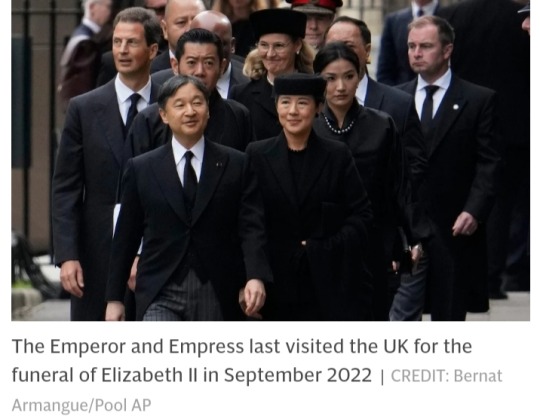
In 2006, King Charles wrote of “the close friendship between the United Kingdom and Japan, which is reflected in the solid bond between the Imperial and Royal Families.”
This visit will further cement that bond – something that the Emperor will reflect on when he privately visits St George’s Chapel at Windsor on June 27 to lay a wreath on the tomb of Queen Elizabeth II.
There, the Garter banner of his father will be above his stall, and the stallplates of his predecessors in their stalls – a permanent record of years of growing friendship.
#Emperor Naruhito#Empress Masako#Queen Elizabeth II#Prince Philip#King Charles III#Imperial House of Japan#Japanese Royal Family#British Royal Family#Japan State Visit 2024#Emperor Hirohito#Sir Esler Dening#British Foreign Office#Garter rosette#British Knights of the Garter#Emperor Mutsuhito#Emperor Yoshihito#Edward VII#Prince Arthur of Connaught#Prince Henry#Duke of Gloucester#Queen Mary#Princess Alexandra#Princess Chichibu#Princess Margaret#Prince William of Gloucester#Sir Fred Warner#US President Gerald Ford#Open Car Drive
14 notes
·
View notes
Text

...images from the lost continent of cult films, b-movies and celluloid dreamscapes









Lunar-tics: Moon Natives and Colonists in SF films
A Trip to the Moon (1902) Woman in the Moon (1929) Cat Women of the Moon (1953) Missile to the Moon (1958) Nude on the Moon (1961) First Men in the Moon (1964) 2001: A Space Odyssey (1968) Moon Zero Two (1969) The Adventures of Baron Munchausen (1989)
#the moon#sf#fantasy#from the badlands#from the b-movie badlands#silent film#creature feature#classic#sci fi#vintage
7 notes
·
View notes
Text
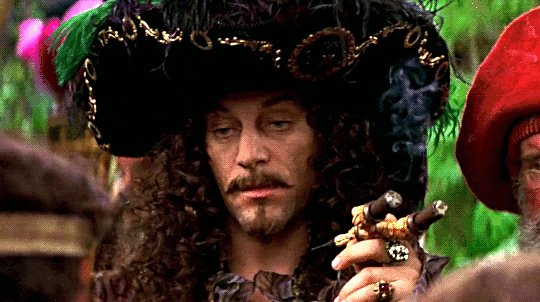

Do you remember Peter Pan (2003)? I do, I do!
by Maria Isabel Nieves Bosch
The story of J. M. Barrie's Peter Pan & Wendy has been adapted many times in movies, from Walt Disney's animated picture Peter Pan (1953) and Paramount Pictures' silent film Peter Pan (1924) to live action films like Hook (1991), Peter Pan (2003), Pan (2015), Wendy (2020) and TV shows, such as Syfy's prequel Neverland (2011) and Peter Pan & Wendy (2023) on Disney +. Apart from these adaptations, a biopic titled Finding Neverland (2004) based on J. M. Barrie's life was also made depicting his inspiration for writing the beloved children's tale. Nevertheless, the character of Peter Pan first appears in an episodic narrative for adults in 1902 titled The Little White Bird. Professor Sally Bushell of Romantic and Victorian Literature at Lancaster University writes, "Peter is represented in multiple ways, with his identity morphing and changing across these works to a considerable degree."
#movie review#peter pan#peter pan and wendy#peter pan 2003#jason isaacs#captain james hook#jm barrie#book adaptation#movie
37 notes
·
View notes
Text


Geddy Lee (1953-) Rush - bass guitar and lead vocals
Songs: "Fly By Night," "Closer to the Heart"
Propaganda: "man is one of the most talented bassists in the world, he's been hot non-stop since the 70s, he's a dork and dorks are sexy"
Smith Ballew (1902-1984) solo
Songs: "The Night Is Young," "Time On My Hands"
Propaganda: "Thanks to music copyright laws of the 1930s he recorded a bunch of love songs where the pronouns couldn’t change. “He’s my secret passion” is my favourite of them. Listen and yearn ❤️"
19 notes
·
View notes
Text
Stepin Fetchit
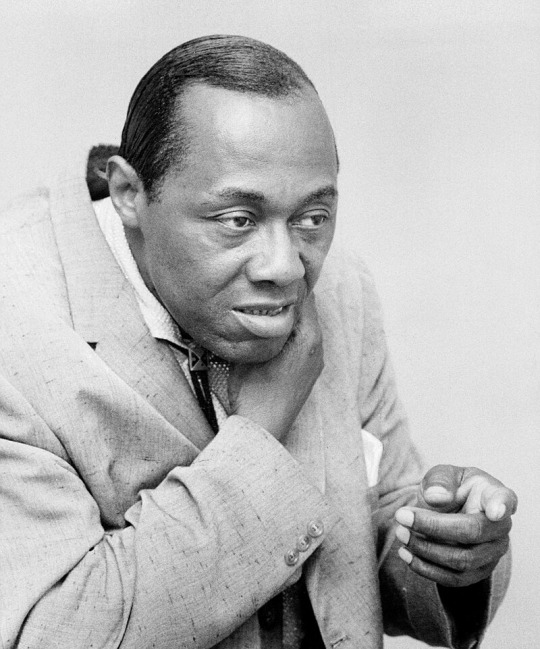
Lincoln Theodore Monroe Andrew Perry (May 30, 1902 – November 19, 1985), better known by the stage name Stepin Fetchit, was an American vaudevillian, comedian, and film actor of Jamaican and Bahamian descent, considered to be the first black actor to have a successful film career. His highest profile was during the 1930s in films and on stage, when his persona of Stepin Fetchit was billed as the "Laziest Man in the World".
Perry parlayed the Fetchit persona into a successful film career, becoming the first black actor to earn $1 million. He was also the first black actor to receive featured screen credit in a film.
Perry's film career slowed after 1939 and nearly stopped altogether after 1953. Around that time, Black Americans began to see his Stepin Fetchit persona as an embarrassing and harmful anachronism, echoing negative stereotypes. However, the Stepin Fetchit character has undergone a re-evaluation by some scholars in recent times, who view him as an embodiment of the trickster archetype.
Little is known about Perry's background other than that he was born in Key West, Florida, to West Indian immigrants. He was the second child of Joseph Perry, a cigar maker from Jamaica (although some sources indicate the Bahamas) and Dora Monroe, a seamstress from Nassau, The Bahamas. Both of his parents came to the United States in the 1890s, where they married. By 1910, the family had moved north to Tampa, Florida. Another source says he was adopted when he was 11 years old and taken to live in Montgomery, Alabama.
His mother wanted him to be a dentist, so Perry was adopted by a quack dentist, for whom he blacked boots before running away at age 12 to join a carnival. He earned his living for a few years as a singer and tap dancer.
18 notes
·
View notes
Text
Coronation Timings
Queen Victoria
Ascended the throne: 20 June 1837.
Coronation: 28 June 1838.
Crowned 12 months after her ascension to the throne.
Edward VII
Ascended the throne: 22 January 1901.
Coronation: 9 August 1902, planned for 26 June 1902 but deferred because the King had appendicitis.
Crowned 19 months after his ascension to the throne. The coronation was originally planned for 17 months after ascension.
George V
Ascended the throne: 6 May 1910.
Coronation: 22 June 1911.
Crowned 13 months after his ascension to the throne.
Edward VIII
Ascended the throne: 20 January 1936.
Coronation: Never happened; he abdicated on 11 December 1936.
George VI
Ascended the throne: 11 December 1936.
Coronation: 12 May 1937.
Crowned 5 months after his ascension; the coronation was planned for his brother Edward VIII and was held 16 months after the death of George V.
Elizabeth II
Ascended the throne: 6 February 1952
Coronation: 2 June 1953
Crowned 16 months after her ascension to the throne.
Charles III
Ascended the throne: 8 September 2022.
Coronation: 6 May 2023.
Crowned 8 months after his ascension to the throne.
He just can't wait to be king crowned.
101 notes
·
View notes
Text
Masterpost: Royal Authors
This is a text version of the original list I curated, which can be found here. The royals are listed chronologically based on their first name (not title). The books are listed with the oldest book first & most recently published book last.
Some of the mentioned people have published books or lent out their names for books as private citizens; this post & the original list only cover royal members & books published under their royal title. This means that some books & some people have been excluded due to not falling under those criteria.
Note: Some of the following links are affiliate links, which means I earn a commission on every purchase. This does not affect the price you pay.
Princess Akiko of Mikasa
Reconsidering early modern Yamato-e: perspectives from Japan, the UK, and the USA (2013)
Japan: Courts and Culture (2020)
Princess Alice, Duchess of Gloucester
The Memoirs of Princess Alice Duchess of Gloucester (1983)
Memories of Ninety Years (1991)
Catherine, Princess of Wales
Hold Still (2021)
Puzzles for Spies: The brand-new puzzle book from GCHQ (2022)
King Charles III
The Old Man of Lochnagar (1980)
Tomorrow is Too Late - A Celebration of Our Wildlife Heritage (1990) (with Sir David Attenborough, among others)
The Prince's Choice: A Personal Selection from Shakespeare by the Prince of Wales (1995)
Harmony: A New Way of Looking at Our World (2010)
Harmony: A New Way of Looking at Our World - Children's Edition
One Is Deeply Concerned: The Prince Charles Letters, 1969-2011 (2011)
The Prince's Speech: On the Future of Food (2012)
The list is too long; that man puts his name on literally everything. Check the page for more.
Princess Christina, Mrs Magnuson
Days at Drottningholm (2016)
Diana, Princess of Wales
British Sign Language: A Beginner's Guide (1988)
PEOPLE OF THE 90's: In Aid of the Malcolm Sargent Cancer Fund for Children (1995)
Hannah Riddell: An Englishwoman in Japan (1996)
Head Injury: A Practical Guide (1997)
King Edward VIII, Duke of Windsor
Launch! A Life-Boat Book (1932)
A King's Story: The Memoirs of the Duke of Windsor (1951)
The Crown and the People, 1902-1953 (1953)
Prince Edward, Duke of Kent
Jackie Stewart's Principles of Performance Driving (1986)
Australia Bound!: Story of West Country Connections, 1688-1888 (1988)
Deep into Blue Holes: The Story of The Andros Project (1989)
The Institution of Industrial Managers: A History 1931-1991 (1991)
The Story of E. H. Shepard: The Man Who Drew Pooh (2000)
Tribal Odyssey: A Photographic Journey Among Tribes (2000)
Chasin' the Sound: Tales and tunes from the career of Pipe Major Brian B Heriot, Scots Guards (2016)
A Royal Life (2022) (his memoir)
One Crew: The RNLI's Official 200-Year History (2024)
Queen Elizabeth, The Queen Mother
The Country Life Book of Queen Elizabeth The Queen Mother (1978) (actually by Charles & Godfrey Talbot, not her)
Henrik, Prince Consort
Fit for a Royal Dane: Gastronomic Views and Recipes of Prince Henrik (2002)
Meghan, Duchess of Sussex
Together: Our Community Cookbook (2018)
Princess Michael of Kent
Crowned in a Far Country: Portraits of Eight Royal Brides (1986)
Cupid and the King: Five Royal Paramours (1991)
The Serpent and the Moon: Two Rivals for the Love of a Renaissance King (2004)
A Cheetah's Tale (2017)
Princess Märtha Louise
Why Kings and Queens Don't Wear Crowns (2004)
The Spiritual Password: Learn to Unlock Your Spiritual Power (2014)
Emperor Naruhito
Costume at Castle Howard (1975)
The Thames and I: A Memoir of Two Years at Oxford (1993; 2006; 2019)
Queen Noor
Art of Jordan: Treasures from an Ancient Land (1991)
Landmines and Human Security: International Politics and War's Hidden Legacy
Leadership and the United Nations: The International Leadership Series (2003)
Leap of Faith: Memoirs of an Unexpected Life (2003)
Breaking Ground: From Landmines to Grapevines, One Woman's Mission to Heal the World: Transforming Mines to Vines (2020)
Prince Philip, Duke of Edinburgh
The Duke of Edinburgh's World Tour 1956-1957 (1957)
Selected Speeches 1948-1955 (1957)
Prince Philip speaks: 1956-1959 (1960)
Environmental Revolution: Speeches on Conservation, 1962-77 (1978)
Men, Machines and Sacred Cows (1984)
Down to Earth: Speeches and Writings of His Royal Highness Prince Philip, Duke of Edinburgh, on the Relationship of Man With His Environment (1988)
Survival or Extinction: A Christian Attitude to the Environment (1989)
The list is too long. Check the page for more.
Queen Rania
The Sandwich Swap (2010)
Prince William, Prince of Wales
Blown Away: From Drug Dealer to Life Bringer (2022)
Puzzles for Spies: The brand-new puzzle book from GCHQ (2022)
Earthshot: How to Save Our Planet (2021)
The Earthshot Prize: A Handbook for Dreamers and Thinkers: Solutions to Repair our Planet (2023)
(this post & the original list is a work in progress & will be updated whenever "new" books come on my radar)
#royal watching#literature#affiliate links#british royal family#japanese imperial family#swedish royal family#danish royal family#norwegian royal family#jordanian royal family
10 notes
·
View notes